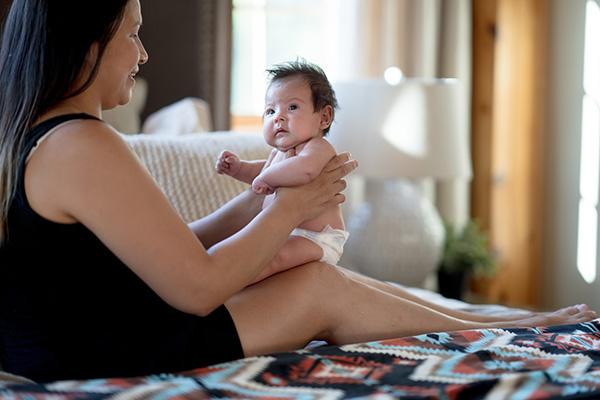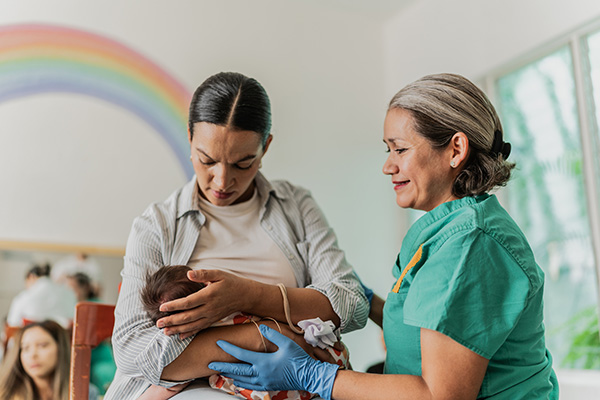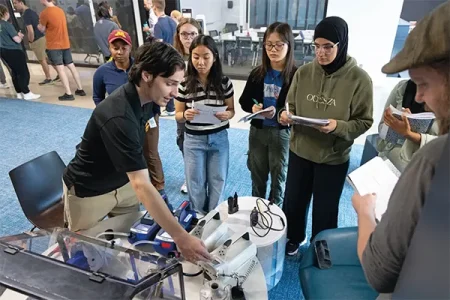Minnesota Unveils New Assisted Living Report Card
Minnesotans looking into assisted living for themselves or loved ones can now use the new Assisted Living Report Card, which allows consumers to find comparative ratings for assisted living residences based on resident and family surveys, and state inspections. Professor Tetyana Shippee, who led research and development of the report card’s quality measures, and who previously led research on the state’s innovative Nursing Home Report Card, said, “Minnesota once again is leading in pioneering a data-driven,evidence-informed tool for consumers seeking assisted living options.”
Gender-based Wage Gaps Persist in Healthcare
“Healthcare is a woman-dominated industry and should be a leading field in promoting gender equality in wages. The good news is that womens’ representation in health care occupations increased to a greater degree in high-education occupations like physicians and advanced practitioners. However, we also found that the gender wage gap remains larger in high-education occupations as compared to lower-education healthcare occupations — meaning that women with several years of education and training are earning a fraction of what their male counterparts are making.”
—Janette Dill, SPH associate professor and lead author of a study focused on pay rates across all healthcare fields
Surge in Gun-related Deaths Among Rural Black Youth
A recent SPH study found that the biggest increase in deaths from firearms in the U.S. was among Black, rural youth. Since 2013, mortality rates in this group have quadrupled. “Firearm-related homicide is no longer an issue that disproportionately affects Black, urban youth; it now impacts all Black youth,” said lead author Allison Lind. “This significant increase in firearm-related deaths in the last decade underscores the urgent need for public health attention to better understand and prevent these deaths.”

Rooting Out Bias in Risk Prediction Models
The increasing availability of health data has led to a corresponding rise in models that interpret this data to inform public health policy. And while these models can benefit policymakers — as well as patients and healthcare providers — they also have the potential to exacerbate health inequities if they fail to catch the biases that may be present in the models. SPH researchers developed a framework and new metrics to measure the fairness of risk prediction models. “While measurement of model inequities is just the first step toward addressing discrimination, it is an important step,” says SPH doctoral student Solvejg Wastvedt. “Without accurate assessments, biased risk prediction models that are intended to personalize treatment can actually make health inequities worse.”
Anti-bias Childbirth Training Courses
To address systemic, racially driven disparities in maternal and infant health in Minnesota, the SPH Center for Antiracism Research for Health Equity (CARHE) worked with partners to develop a series of anti-bias courses for use in obstetric care. “We wanted these courses to center and uplift the voices and lived experiences of Black and Indigenous birthing people in Minnesota,” says CARHE Director, Professor Rachel Hardeman. “Minnesota has a huge gap in maternal health rates between its white birthing population and its Black and Indigenous ones, and we believe these courses will raise awareness of these disparities. We are incredibly grateful to the Black and Indigenous community members for the courage they showed in sharing their stories with us and helping us shape these impactful courses.”

Peer Counseling Programs Positively Impact Rates of Breastfeeding
“As with many other aspects of maternal and infant health, rural residents experience disparities in the number of people who breastfeed, as well as the amount of time they are able to do so,”
says Julia Interrante, researcher at SPH’s Rural Health Research Center. To address these inequities, policymakers have backed initiatives designed to help WIC participants start and sustain breastfeeding, including peer counseling programs. Minnesota’s peer breastfeeding support program had a consistent and significant positive impact in addressing inequities between rural and urban residents, suggesting that policymakers should explore expanding these programs across the state.

School-based Mental Health Services Improve Youth Well-being
Rates of anxiety, depression, and other mental health challenges remain high among U.S. children and adolescents. In response, some school districts have ramped up school-based mental health services for youth who may not have access to other mental health services. SPH researchers analyzing these programs found them to be highly effective — averting approximately 260 self-reported suicide attempts per year. “There is a clear need for additional mental health resources for children and adolescents in the U.S.,” says Ezra Golberstein, SPH associate professor and lead author of the study. “School-based mental health cannot solve all mental health, behavioral, and learning challenges, but this study is evidence that it can be a valuable investment in the well-being of children and adolescents.”



